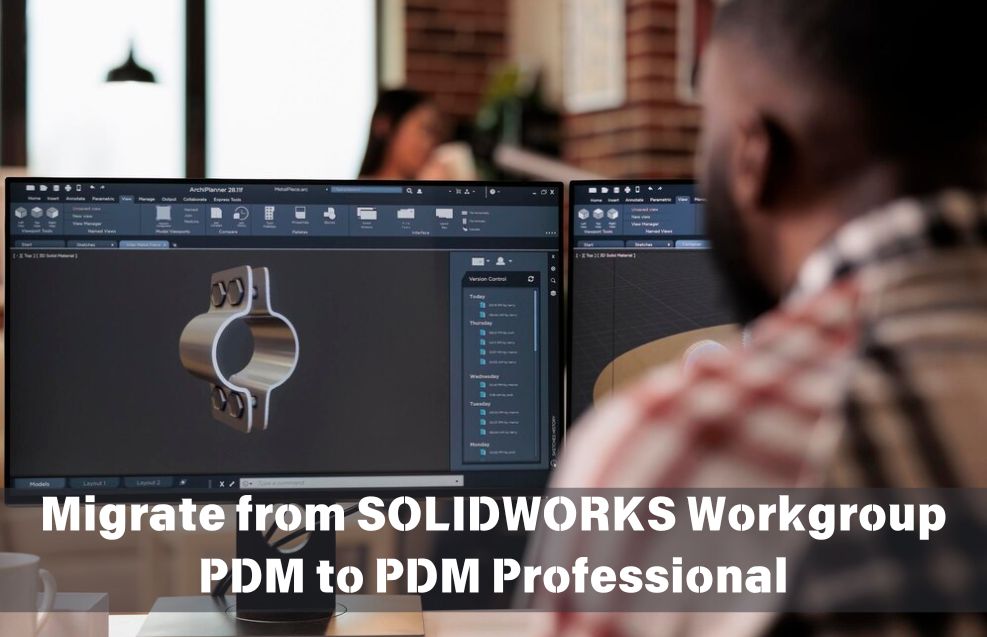With the phasing out of SOLIDWORKS Workgroup PDM, many organizations are transitioning to SOLIDWORKS PDM Professional to enhance their data management capabilities. PDM Professional offers greater flexibility, improved collaboration, and advanced security features. However, migrating data from Workgroup PDM to PDM Professional requires careful planning and execution to ensure a smooth transition.
Key Benefits of Migrating to SOLIDWORKS PDM Professional
- Enhanced Collaboration: Centralized vault with real-time multi-user access.
- Improved Security: Role-based access controls and revision tracking.
- Better Performance: Scalability to handle larger assemblies and complex projects.
- Integration with ERP and Other Systems: Enhanced automation and workflow customization.
Migration Process Overview
Migrating from Solidworks Workgroup PDM to PDM Professional is a multi-step process that includes preparation, data extraction, data transformation, and final deployment. Below is a step-by-step guide to ensure a successful migration.
1. Assess Your Current Workgroup PDM Environment
Before starting the migration, conduct a thorough assessment of your Workgroup PDM setup:
- Identify all files and metadata stored in Workgroup PDM.
- Check for duplicate, obsolete, or incomplete files.
- Document user roles, workflows, and revision schemes.
- Verify system requirements for PDM Professional.
2. Plan the Migration Strategy
- Determine whether to migrate all historical data or only active projects.
- Establish a backup plan to prevent data loss.
- Assign roles and responsibilities within the migration team.
- Set a timeline and key milestones for migration completion.
3. Extract Data from Workgroup PDM
SOLIDWORKS provides tools to export data from Workgroup PDM, including:
- SOLIDWORKS Workgroup PDM Export Tool to extract CAD files and metadata.
- Batch Exporting to manually move non-CAD documents.
- Custom Scripts (if needed) to maintain data integrity.
4. Prepare Data for Import
- Clean up file names, properties, and metadata.
- Convert file references to match PDM Professional’s database structure.
- Organize files into appropriate folders and categories.
5. Set Up SOLIDWORKS PDM Professional
- Install and configure SOLIDWORKS PDM Professional.
- Define workflows, permissions, and access controls.
- Create a vault structure that aligns with your team’s needs.
6. Import Data into PDM Professional
- Use PDM Bulk Import Tools to efficiently upload extracted files.
- Validate the data integrity and ensure proper file referencing.
- Test workflows and user permissions before full deployment.
7. Testing and Validation
- Conduct a thorough review of imported files and metadata.
- Verify workflows, search functionality, and revision control settings.
- Perform pilot testing with a small group before full implementation.
8. User Training and Deployment
- Train users on how to navigate and use PDM Professional.
- Provide documentation and support resources.
- Gradually roll out the new system and monitor for any issues.
Common Challenges and How to Overcome Them
- Data Loss or Corruption: Always create multiple backups before starting the migration.
- File Reference Issues: Use built-in tools to fix broken references post-migration.
- User Resistance to Change: Provide training and highlight the benefits of the new system.
- Downtime Concerns: Plan the migration during low-activity periods to minimize disruptions.
Conclusion
Migrating from SOLIDWORKS Workgroup PDM to PDM Professional can significantly enhance your organization’s data management capabilities. By carefully planning the migration process and leveraging the right tools, you can ensure a smooth transition with minimal disruptions. If needed, consider working with SOLIDWORKS PDM specialists to optimize your migration strategy.
Are you planning to migrate soon? Share your experience or questions in the comments below!
Read Also : How Architects Can Use SketchUp 3D Warehouse for Faster Design

